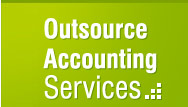 Depreciation
& Amortization Schedules
Depreciation
& Amortization Schedules
Amortization, an accounting
concept similar to depreciation, is the gradual reduction of the value
of an asset or liability by some periodic amount (i.e., via installment
payments). In the case of an asset, it involves expensing the item over
the "life" of the item-the time period over which it can be
used. For a liability, the amortization takes place over the time period
that the item is repaid or earned. Amortization is essentially a means
to allocate categories of assets and liabilities to their pertinent time
period.

|
The key difference between depreciation and amortization is the nature
of the items to which the terms apply. The former is generally used in
the context of tangible assets, such as buildings, machinery, and
equipment. The latter is more commonly associated with intangible
assets, such as copyrights, goodwill, patents, and capitalized costs
(e.g. product development costs). On the liability side, amortization is
commonly applied to deferred revenue items such as premium income or
subscription revenue (wherein cash payments are often received in
advance of delivery of goods or services), and therefore must be
recognized as income distributed over some future period of time.
Amortization is a means by which accountants apply the period concept
in accrual-based financial statements: income and expenses are recorded
in the periods affected, rather than when the cash actually changes
hands. The importance of spreading transactions across several periods
becomes more clear when considering long-lived assets of substantial
cost. Just as it would be inappropriate to expense the entire cost of a
new facility in the year of its acquisition since its life would extend
over many years, it would be wrong to fully expense an intangible asset
only in the first year. Intangible assets such as copyrights, patents,
and goodwill can be of benefit to a business for many years, so the cost
of accruing such assets should be spread over the entire time period the
company that the company is likely to use the asset or generate revenue
from it.
The periods over which intangible assets are amortized vary widely,
from a few years to as many as 40 years. (The costs incurred with
establishing and protecting patent rights, for example, are generally
amortized over 17 years.) The general rule is that the asset should be
amortized over its useful life. Small business owners should realize,
however, that not all assets are consumed by their use or by the passage
of time, and thus are not subject to amortization or depreciation. The
value of land, for instance, is generally not degraded by time or use
(indeed, the value of land assets often increases with time). This
applies to intangible assets as well; trademarks can have indefinite
lives and can increase in value over time, and thus are not subject to
amortization.





